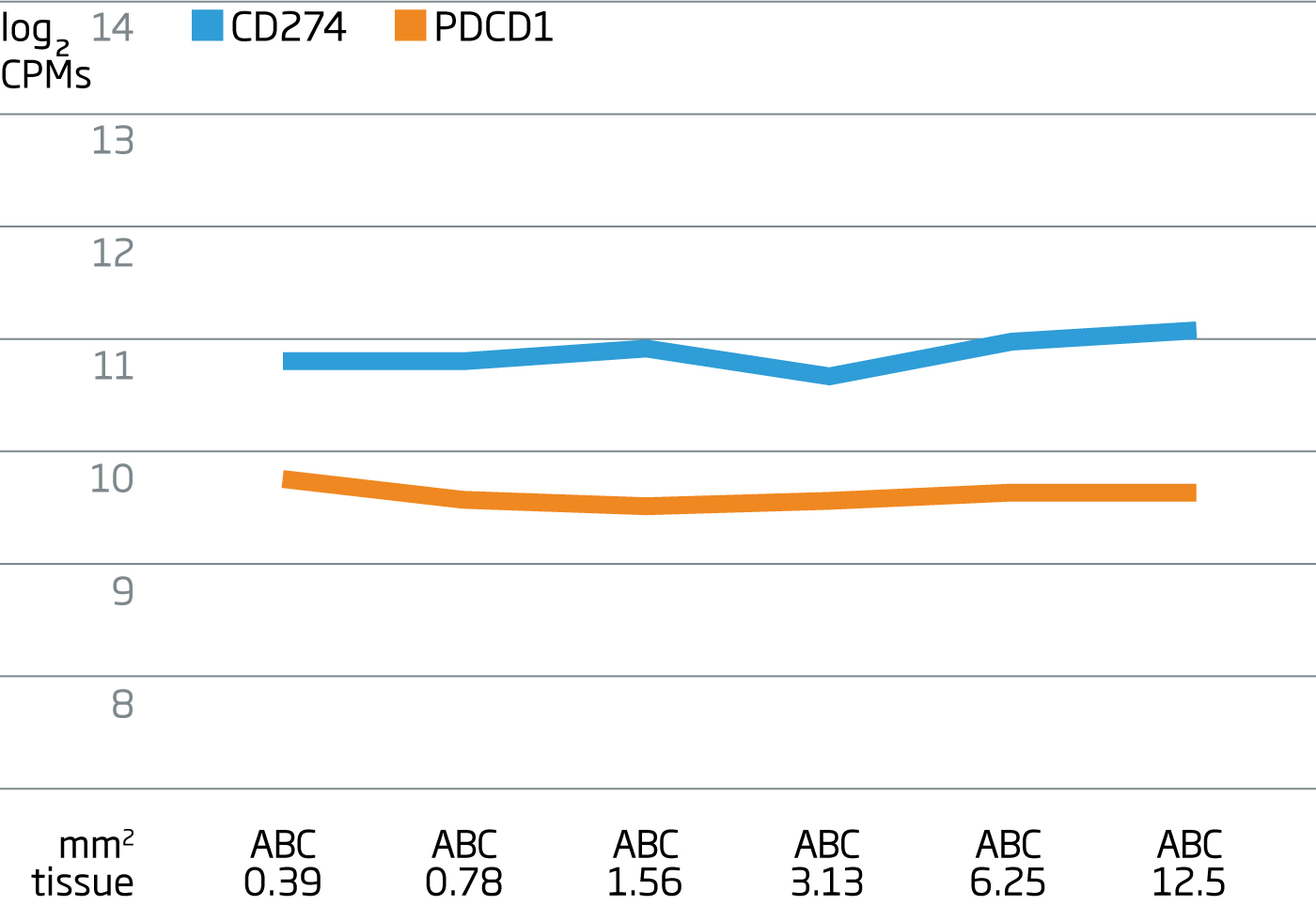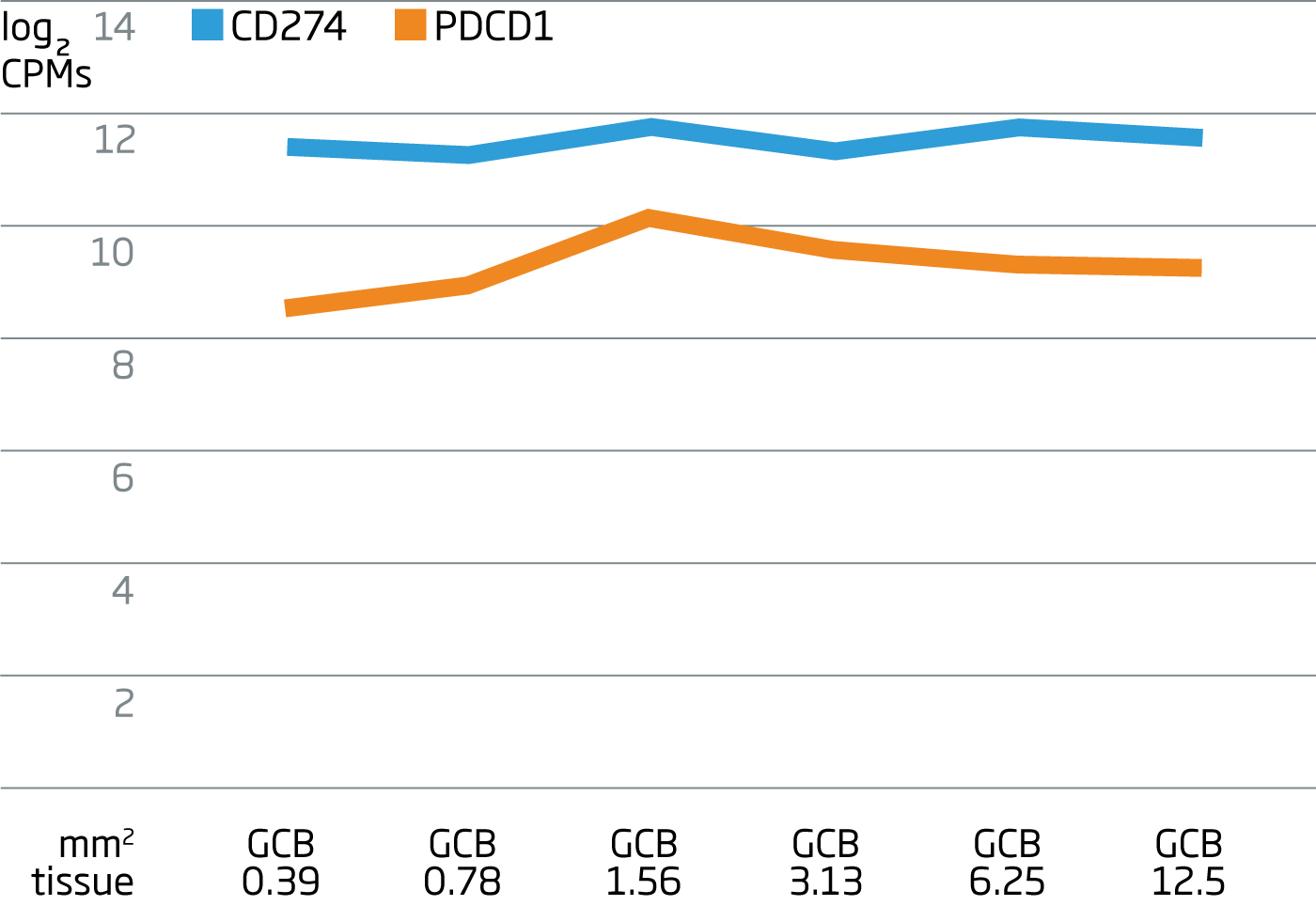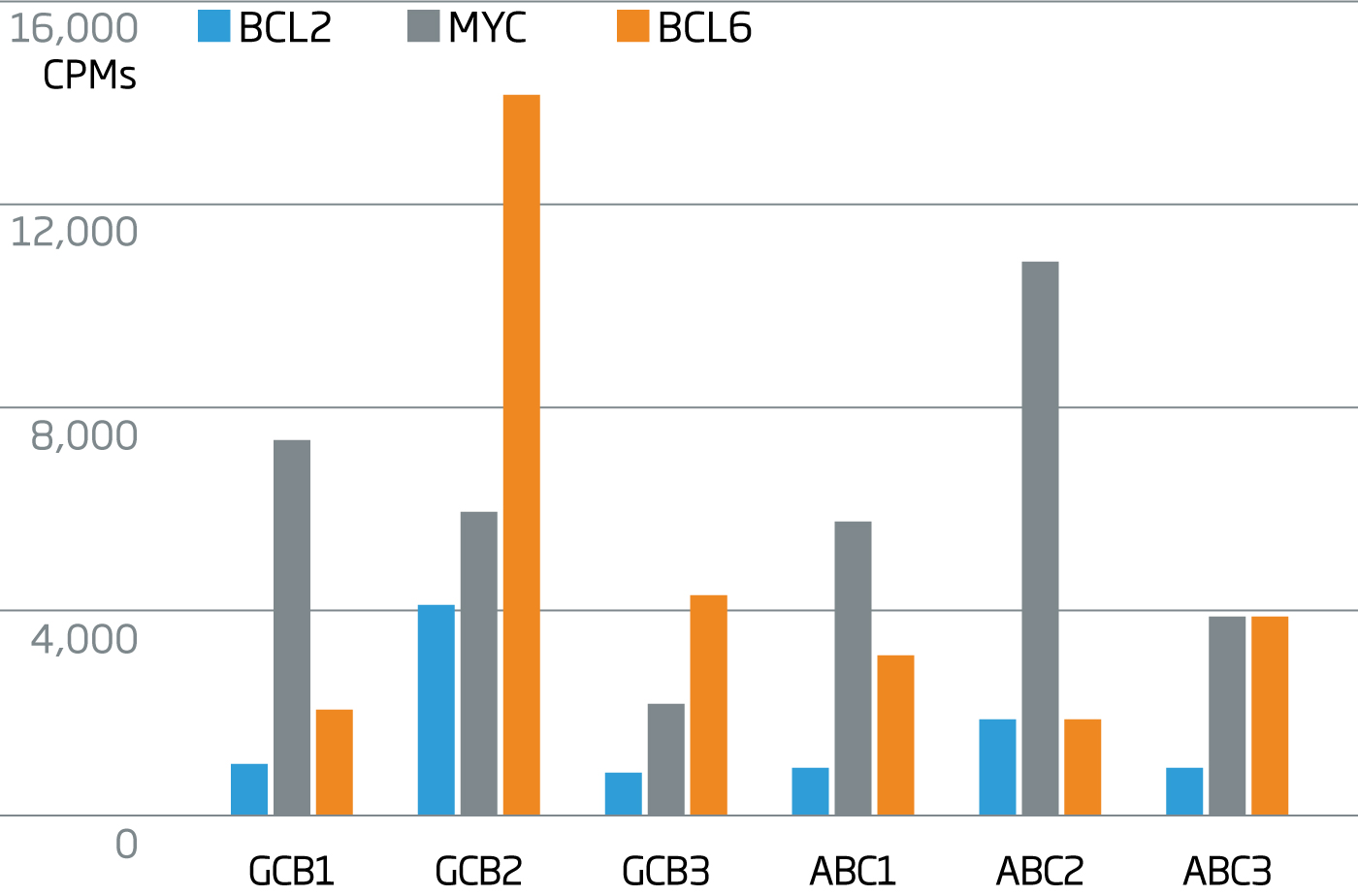
HTG EdgeSeq DLBCL Cell of Origin Assay
The HTG EdgeSeq DLBCL Cell of Origin Assay characterizes diffuse large B-cell lymphoma (DLBCL) into the activated B-cell like (ABC), germinal center B-cell like (GCB) or unclassified subtype using a single 5 µm formalin-fixed, paraffin-embedded (FFPE) tissue section including core needle biopsies. The DLBCL Cell of Origin Assay utilizes our automated HTG EdgeSeq system coupled with the sensitivity and dynamic range of next-generation sequencing (NGS)-based detection, and can be performed in your lab using the
HTG EdgeSeq system, in our VERI/O lab as a service, or at one of the Qualified Service Provider (QSP) sites.
For Research Use Only. Not for Use in Diagnostic Procedures.
Features and Benefits
- Simultaneous, quantitative detection of 92 transcripts associated with B-cell lymphomas
- Classification and profiling from a single FFPE tissue section including needle core and other small biopsies
- Extraction-free: reduce extraction-associated data bias and sample loss
- Gain insights faster: results in as little as 36 hours
- Simplified data analysis: raw numerical data output provided in Excel format
Sample Requirements
| Sample Type | Recommended Sample Input |
|---|---|
Larger sample input amounts must be diluted. Please consult the assay package insert and HTG EdgeSeq System User Manual for more details. |
|
| FFPE Tissue | One 5 µm section |
Performance
Benefit from NGS detection sensitivity and dynamic range to consistently measure small changes in high- and low-expressing genes.
Expression of PDCD1 and CD274 (PD-1 and PDL-1) is consistent across the titrations, indicating low expression genes are detected using the HTG EdgeSeq DLBCL Cell of Origin Assay in small amounts of FFPE tissue.


Applications
Recent advances in diffuse large B-cell lymphoma research have shown that determining whether the tumor is a "double-hit" or "double-expressor" tumor may be important. Unlike traditional methods, such as immunohistochemistry (IHC), the HTG EdgeSeq DLBCL Cell of Origin Assay enables researchers to consolidate the measurement of many important biomarkers into a single assay and workflow.

Sample GCB2 shows elevated expression of BCL2, MYC, and BCL6 indicative of a potential double/triple expressor profile.
Additional applications include:
- Assessment of potential of drug target candidates
- Assessment of the additional lymphoma-associated genes for signature development
Ordering Information
When placing an order, please specify the catalog number. The HTG EdgeSeq DLBCL Cell of Origin Assay is compatible with Illumina MiSeq sequencer.
Kit Configurations for use with the Illumina MiSeq Sequencer
916-003-208 HTG EdgeSeq DLBCL Cell of Origin Assay (2X8)
916-003-008 HTG EdgeSeq DLBCL Cell of Origin Assay (4X8)
916-003-224 HTG EdgeSeq DLBCL Cell of Origin Assay (1X24)
916-003-024 HTG EdgeSeq DLBCL Cell of Origin Assay (4X24)
916-003-096 HTG EdgeSeq DLBCL Cell of Origin Assay (1X96)
Kit Configurations for use with the Thermo Fisher Scientific Ion Torrent Sequencers
916-016-308 HTG EdgeSeq DLBCL Cell of Origin Assay (2X8)
916-016-108 HTG EdgeSeq DLBCL Cell of Origin Assay (4X8)
916-016-124 HTG EdgeSeq DLBCL Cell of Origin Assay (4X24)
916-016-196 HTG EdgeSeq DLBCL Cell of Origin Assay (1X96)
For Research Use Only. Not for Use in Diagnostic Procedures.
Not for sale in EU.
Resources and Publications
Learn more about the HTG EdgeSeq DLBCL Cell of Origin Assay
Comprehensive Tumor Profiling Brochure
Download pdf 490KB
HTG EdgeSeq DLBCL Cell of Origin Assay Gene List
Download pdf 70KB
Publications
Prevalence of IRF4 rearrangement in large B-cell lymphomas of the Waldeyer’s ring in adults
View External Link
Clinical impact of ibrutinib plus R-CHOP in untreated DLBCL co-expressing BCL2 and MYC in the phase 3 PHOENIX trial
View External Link
ASH 2022: 2874: Deep Peripheral T Cell Immune-Profiling in Relapsed/Refractory Non-Hodgkin Lymphoma: Evaluation of Baseline Samples from the Epcoritamab Epcore NHL-1 Trial
Download pdf 2.0MB
View External Link
ASH 2022: 1529: Biomarker Analysis of Zanubrutinib and Tislelizumab Combination Therapy in Patients with Relapsed/Refractory B-Cell Malignancies
Download pdf 232KB
View External Link
Longitudinal expression profiling identifies a poor risk subset of patients with ABC-type Diffuse Large B Cell Lymphoma
View External Link
DLBCL 1L—What to Expect beyond R-CHOP?
View External Link
Diffuse large B-cell lymphomas in adults with aberrant coexpression of CD10, BCL6, and MUM1 are enriched in IRF4 rearrangements
View External Link
A refined cell-of-origin classifier with targeted NGS and artificial
intelligence shows robust predictive value in DLBCL
Download pdf 2.1MB
Molecular Characteristics of Diffuse Large B-Cell Lymphoma and Correlation with baseline Metabolic Tumor volume (MTV), Interim Positron Emission Tomography (iPET) and Outcome in the PETAL Trial.
Download pdf 757KB
Nivolumab for Relapsed/Refractory Diffuse Large B-cell Lymphoma in Patients Ineligible for or Having Failed Autologous Transplantation: A Single-Arm, Phase II Study
Download pdf 873KB
Comparison of Immunohistochemistry Assay Results with Gene Expression Profiling Methods for Diffuse Large B-Cell Lymphoma Subtype Identification in Matched Patient Samples.
Download pdf 1.3MB
Cell-of-origin classification of diffuse large B-cell lymphoma - comparison of molecular tests and extension to the PETAL trial
Download pdf 121KB
Next-Generation Sequencing for DLBCL Classification
Download pdf 740KB
Learn More
For further information about the HTG EdgeSeq DLBCL Cell of Origin Assay, please fill out the registration form below or call us at (877) 507-3259.
Page last updated June 29, 2022